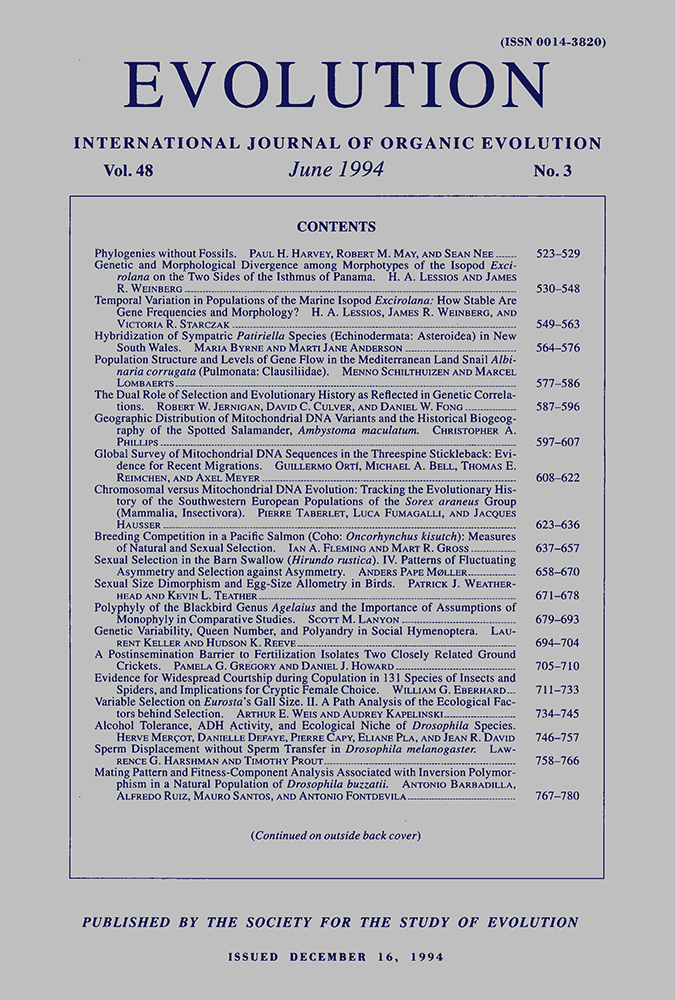GEOGRAPHIC DISTRIBUTION OF MITOCHONDRIAL DNA VARIANTS AND THE HISTORICAL BIOGEOGRAPHY OF THE SPOTTED SALAMANDER, AMBYSTOMA MACULATUM
Abstract
I analyzed geographic partitioning of mitochondrial DNA (mtDNA) restriction-site variants in the spotted salamander, Ambystoma maculatum. Two highly divergent and geographically separate genetic lineages were identified that differed by a minimum of 19 restriction sites (6% sequence divergence). One of the lineages has a disjunct distribution with very closely related haplotypes occurring in Missouri, Arkansas, North Carolina, and Virginia. The other lineage is found in Michigan, Illinois, and Alabama. The geographic separation of highly divergent mtDNA haplotypes, a pattern that was predicted based on the sedentary nature of these salamanders, is evidence for long-term barriers to gene flow. In contrast, the large-scale disjunction of very similar haplotypes suggests recent, long-distance gene flow and does not match the phylogeographic expectation for a small terrestrial vertebrate. I explain this potential contradiction in the level of importance assigned to gene flow by a scenario in which historical barriers to gene flow account for the two divergent mtDNA assemblages, but stochastic sorting of ancestral polymorphism is responsible for the large-scale geographic disjunction. Ten of 16 populations collected in the Ozark Highlands were fixed for the same haplotype. I attribute this lack of detectable variation to recent colonization of this area, a hypothesis that is supported by paleoecological data and demonstrates the potential benefits of combining data from paleobotany, geology, and other disciplines to reconstruct the historical biogeography of a species.




